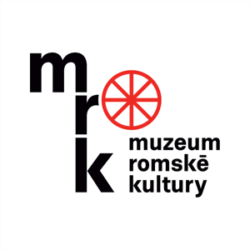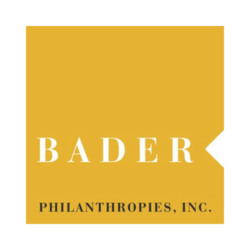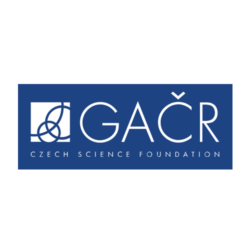Pavlína Nováková
Pavlína Nováková, née Istvánová (born 1928, in Brno), came from a family of Moravian Roma. She was interned in several concentration camps, including Auschwitz II - Birkenau, Ravensbrück and Kraslice. She was one of the few interned Romani prisoners to survive, and the only one of her family. After liberation, she returned to Brno, sold her family home and left for Western Bohemia near the German border, from which the German population had been expelled.
-
Testimony abstract
Pavlina Nováková's father had an accident as a fourteen-year-old boy when he was buried alive in a quarry. He then earned his living as a shoemaker and received a pension of five hundred crowns. Pavlina’s mother was a housewife. The Istváns had six children and the family lived in their own house in Brno.
Pavlína said the family said they had no idea what a concentration camp was. A summons came for her and her mother. At that time Pavlína was being held in the prison at Cejl[1] because she used to run away from home and school; neither her father nor the other children were summoned. Both mother and daughter were taken to the Brno slaughterhouse collection point and from there to the camp at Hodonín u Kunštátu. Their father, however, was on good terms with the Czech gendarmes, whose boots he made, and so they were able to return home. In 1942, however, they were both taken again to the slaughterhouse, where they were kept for two or three weeks. In the meantime, the other Roma from Bohemia and Moravia were rounded up, including from Prague, Brno,[2] Olomouc, Rousínov and Kyjov, and they were taken to Auschwitz in wagons intended for transporting pigs. She says that half the children suffocated on the way in the overcrowded wagons. Some Roma threw letters from the train to their families, telling them to hide. Czech gendarmes rode with them to the border, where the Gestapo and their dogs took them over. She believed this was the first transport to Auschwitz, because only two concentration camps and a crematorium had been built there at that time. She said that there were also Jews with them.[3] On their arrival, the Germans tattooed a number on their arms and herded them into the blocks. She said pregnant women and children under the age of six were sent straight to “the furnaces”. A kindergarten was run for some of the children, but in time they were also murdered in the gas chambers. Older children had to work in the sulphur mines. Prisoners infected with typhus were sent straight to “the furnaces”. When “the furnaces” were overcrowded, a pit was dug, gasoline poured into it, wood piled there, and the dogs chased the prisoners directly into the pit.
Through cracks in the barrack walls she saw transports arriving from other camps, Roma from various countries, except for Slovakia and Hungary. The Romanian Roma were ill and the whole transport went straight to “the furnaces”. In the morning, all you could see were flames and a lot of rags left behind.
She remembered the kapos. The Czech and German Roma kapos were said to be worse than the Gestapo. When a prisoner asked for more soup, the Gestapo would sometimes secretly leave some at the bottom of the cauldron; but if one of the Roma kapos noticed someone rushing to the cauldron, he killed on him on the spot. According to the survivor, the Jewish kapos resolutely forced the prisoners to work, even when they were sick. They also chose girls as young as 14 or 15 for sex, which to some extent protected these girls from being murdered. Some Poles were good, they warned the prisoners about poisoned medicines. She said the Ukrainians picked on them; for instance, when they saw a prisoner show a cross to a new transport as a sign they were going to the gas chambers, they would beat them to death. People who had just arrived on the transport would throw away parcels of things, and if a prisoner tried to take them, a Ukrainian or a Russian woman would beat him to death with a whip. When there was scabies they had to bathe in sulphur water; if someone didn't want to go, they hosed them into it with ice-cold water. Ukrainian women had to serve the Germans in the so-called brothel and lived outside the camp. According to Nováková, “they were in clover”.
There were only Czech, Moravian and German Roma in their barrack. In one barrack, about 200 prisoners slept on three-storey plank-beds, usually the whole family together. Nováková herself slept on a plank-bed with three sisters and two brothers. When her little brother died, she carried him in her arms and begged the Gestapo man to lay him nicely on the pile,but instead he grabbed his little arm and flung him there. She dragged her dead mother by her legs two hundred metres to the crematorium.
For food they were given beets, nettles, rotten potatoes and the meat of animals that had died and been chopped up. Only when [Josef] Mengele came there did they add margarine or butter, for example, to make it look as if the prisoners' were receiving good food. When Mengele left, it was removed from the food again.
In the morning there was a roll call of the prisoners, during which they were selected for work. If a man was too thin, what the survivor called a “muzman” [Musulmann], they shot him and in the evening took him to the heap where there were another fifty or sixty dead. In addition, they struck prisoners who were being punished with shovels or pickaxes.
The prisoners worked in the quarry, throwing stones and rubble into big iron trucks,like the ones used in mines. Whoever was able in the morning went to work, while the old people stayed in the block. After the return from work there was a roll call and distribution of food. Sometimes this was followed by what the survivor called “eklauzn”,[4] when the prisoners had to strip naked, be shaved, “top and bottom” she said, and have kerosene pumped on them as disinfectant. If lice or fleas were found, the prisoners were driven out of the block and put in a clean block, and the whole building was disinfected. If a prisoner kept anything in the block, such as food, they lost it. For example, prisoners hoarded potatoes or bread, and also exchanged bread for soup with the Russians or Ukrainians on the other side of the fence.
Barrels were used as toilets, and their contents then emptied by the prisoners into the cesspool using the food bowls. The barrels had to be scrubbed until they shone.
Once some young prisoners tried to escape through an underground sewer, but they were caught, and, with members of their family, were hogtied and beaten, and the boys were riddled with bullets. Other prisoners had to run in the mud outside, keep running and lying down until they fell. And whoever fell, was finished off.
During her imprisonment in the camps, Pavlina contracted tuberculosis and typhus. She was in Auschwitz for more than two years, and then was taken to Ravensbrück, where there were brick barracks, and instead of tattoos a hole was cut in the middle of their calves as a kind of mark. Then they took her to “Plavna”,[5] Svatava and Kraslice. In Kraslice they made hand grenades, and also worked in the bottling plant of the brewery. She remembers a German making them a Christmas tree. A Czech in the factory gave them plans for escaping to Prague. He encouraged them to make a mess, and make things properly only when the Gestapo came by. Her friend Barka who slept above her, escaped with the help of the plan. Her absence was discovered in the morning and Pavlina confessed that she had unpicked the cross markings on Barka's clothes and also agreed to let Barka go and fetch coffee instead of her. Erika, the Gestapo girl, beat her for that and knocked out three of her teeth. As punishment, she had to work outside, harnessed to a wagon.
Pavlina recalls that some of the Roma in the camp behaved badly. When someone put a bowl in front of them to scoop food, they threw it in the person’s face along with its contents.
When the front was approaching, they left Kraslice on a death march. She experienced a bombardment in which twelve wagons were destroyed; but theirs did not get hit. The dead prisoners were then buried in the fields. The Germans no longer walked with them in uniform, but in civilian clothes. The Jews were returned to Terezín and the other prisoners were constantly moved; they were afraid of the American planes. They were given white scarves to wave when the planes flew over, to make it obvious that they were prisoners. When there were air raids, they slept in farmers’ homes and in barns, but also in the fields, even in the winter. If someone couldn't go on, they were shot. The Germans took the prisoners' bread and salami and gave them sugar, flour or potatoes instead, which they begged from the farmers.
The prisoners were released on the day Adolf Hitler died. Before that[6] they had stayed in Manětín and Knínice,[7] where there were partisans. She said the Germans caught the partisans and burned Knínice - and then she told a story of revenge, when she said the Americans brutally tortured the mayor,[8] hung him up and people spat on him.[9] From Manětín the Americans took the prisoners to Prague, which the Russians had already reached, and where fighting was still going on.
- [1] A former penitentiary in Brno-Zábrdovice between Bratislavská, Soudní and Cejl streets.
- [2] She does not mention whether there were other members of their family among them; however, later she was in Auschwitz with her brothers.
- [3] It is not clear whether he means the transport or the camp.
- [4] A corruption of the German entlausen, to delouse.
- [5] A town in Saxony.
- [6] It is not clear when exactly.
- [7] A small village north of the town of Žlutice, in western Bohemia.
- [8] His name and the name of the village is not mentioned.
- [9] We have found no record of the burning of Knínice or of the Americans' punishment of the mayor after the war in the historiography.
When Pavlina Nováková got to Brno after the war, someone was already living in her house. At the National Committee, where she went to request the return of her property, she was told that the Germans had sold everything, so she was given only a wardrobe, a bed, and food vouchers. All she asked for was a black costume, so she could wear mourning. She sold the house to her aunt, who had returned from a concentration camp, and moved to Kraslice, where she lived in a villa with a garden abandoned by a doctor. She worked in a lemonade bottling plant, and for four years on a youth construction site; however, she had to falsify her birth date because she was too young. Then they took the villa away from her, saying that she didn't need such a big house and that she would get an apartment, which was why she went to the Karlovy Vary region.
How to cite abstract
Abstract of testimony from: HÜBSCHMANNOVÁ, Milena, ed. “Po židoch cigáni.” Svědectví Romů ze Slovenska 1939–1945.: I. díl (1939–srpen 1944). 1. Praha: Triáda, 2005. ISBN 80-86138-14-3, 652-662. Testimonies of the Roma and Sinti. Project of the Prague Forum for Romani Histories, https://www.romatestimonies.com/testimony/pavlina-novakova (accessed 11/30/2025) -
Origin of Testimony
The interview with Pavlina Nováková was recorded in 1998 in Karlovy Vary.
-
Where to find this testimony




